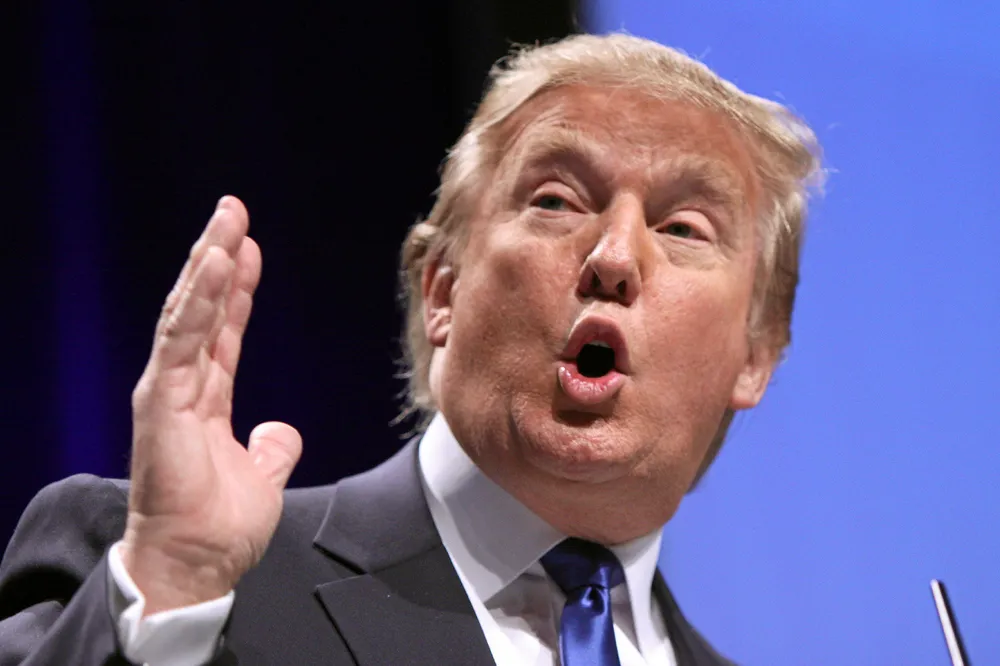Not even Trump's promise to repeal climate law would derail US renewables, says study
BloombergNEF says 'worst-case scenario' of total loss of tax credits would only curtail deployment 17% by 2035

The US is on track for 25% growth in clean energy deployment this year to reach a record high 65GW despite grid and permitting bottlenecks and election uncertainty, BloombergNEF said in its latest renewables market report.
The consultancy forecasts over 1,100GW of clean energy capacity by 2035, up from the 2023 cumulative installed capacity of solar, storage, and wind power at 342GW.
President Joe Biden made climate and energy transition keystones of his presidency, with Vice President and Democratic candidate Kamala Harris expected to continue those policies.
Inflation Reduction Act
Biannual investment in wind and solar has reached nearly $50bn, a 63% increase compared to averages seen from 2019 to 2022, prior to passage of the law, according to BNEF.
The consultancy evaluated different scenarios over the next decade based on policy statements by the candidates.
The 'base case' assumes a continuation of IRA tax incentives, the likely outcome of a Harris victory. In that case, annual clean energy installations would be expected to grow an average 102GW over the next 11 years – quadruple the 26GW average over the past 11 years, to reach 1,118GW by 2035.
The worst-case scenario in which a victorious Trump makes good on his promise to fully repeal IRA tax incentives would slow cumulative deployment by only 17% by 2035, to 927GW.
Cooling inflation and resulting interest rate cuts have also created a more positive business climate for the sector, BNEF noted.
“These fundamental macro-economic forces, which many people call the fuel of the energy transition, are easing for the developers, which is a very positive thing,” Jain said.
“And then at the same time, corporate and utility offtake of clean energy is again growing.”
Worst-case scenario
Different segments would be impacted to varying degrees in this worst-case scenario, with offshore wind the worst. Cumulative capacity would fall short of expected 2035 deployment by 45%, from 39GW to only 21GW.
Onshore deployments would likewise fall short at around 109GW, 32% off its base case forecast of 160GW.
“The wind sector has historically been more reliant on tax credits,” Jain said.
Solar by contrast is slated to remain hot even without tax incentives, with BNEF seeing only a decline of only 13% in cumulative capacity by 2035, to 656.5GW from 755GW in the worst-case scenario. Commercial and residential sectors would be hit harder, but utility scale – the bulk of solar installations, making up two-thirds of the total – would shrug off the loss of IRA tax credits, taking only an 11% hit.
“This is due to our assumption that there would be lower legal fees, absence of any prevailing wage requirements, and just generally, a cheaper equipment market,” he said.
While election anxiety runs high in renewables, particularly offshore wind, which is vulnerable to executive actions due to its reliance on the federal government for leasing and permitting, Jain stressed the economic fundamentals remain strong.
Major utilities across the nation plan to procure at least 272GW of clean energy by 2035, including 210GW of solar, 62GW onshore wind, and 53GW of battery electric storage.
“There’s actually a genuine interest in clean energy technologies from corporates and utility off-takers.”
(Copyright)